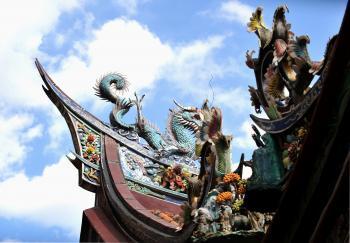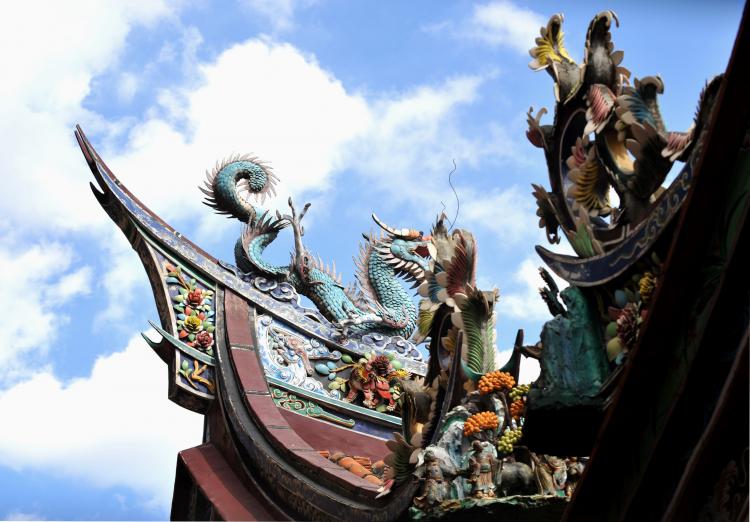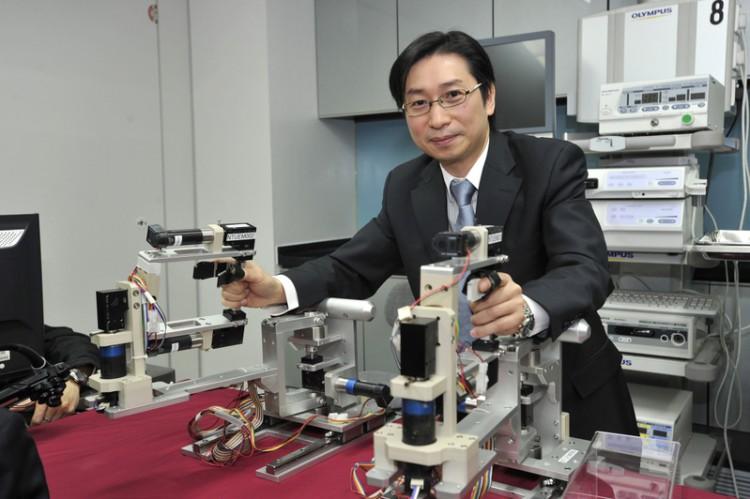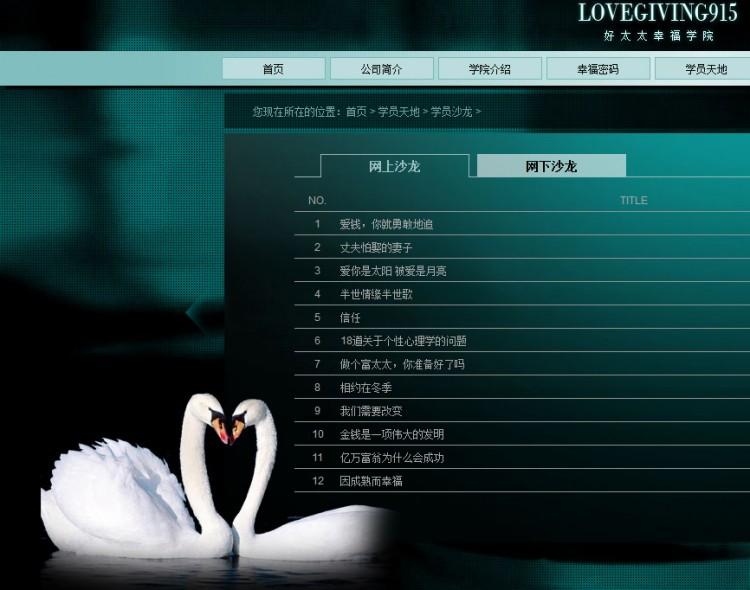Taiwan has a plan to compete with China in the international cultural propaganda stakes: by opening “Taiwan Academies” that will teach the Chinese language with a strong focus on traditional characters and culture.
They hope to counterbalance the efforts of their Chinese nemesis, the Confucius Institutes, who teach in simplified characters, a legacy of the Communist Party’s attempt to undermine Chinese culture from the 1950s and 1960s.
The Taiwan Academy was formed to preserve the authentic cultural heritage and legacy of China’s more than 5,000 year-old history and Chinese history in Taiwan, according to Wu Ying-Yih, chairman of Taiwan’s Overseas Compatriot Affairs Commission (OCAC), the government body that is heading up the initiative.
He spoke to Taiwan’s Legislative Yuan on April 11, announcing that Taiwan Academies will be opened in the United States, with Los Angeles and Houston slated to be the first American host cities. They are still working out the details with their prospective U.S. hosts.
Emile Chih-jen Sheng is chairman of the Taipei Council for Cultural Affairs. At the same speaking event he emphasized that the Taiwan Academy intends to surpass the Confucius Institute, run by the Chinese Communist Party (CCP), in its scope and quality.
He said that while the CCP spends a large amount of money forming Confucius Institutes around the world, it has failed to convey the true essence of Chinese traditional culture. The Taiwan Academy plans to showcase “authentic Chinese traditional culture” through a system of innovative methods, he said, including a website that will be called “Global Chinese Net.”
“The Taiwan Academy will not follow the very controversial Confucius Institute model. We hope it will become the window for our overseas friends to get to know Chinese traditional culture in Taiwan,” said Ren Hong, vice chairman of the Overseas Compatriot Affairs Commission, during the American Council of Teachers of Foreign Language (ACTFL) 2009 Annual Conference.
The Confucius Institutes promoted around the world by the CCP also teach Chinese language and culture—but critics frequently refer to the political baggage they carry. They are part of the Communist Party’s “Grand External Propaganda Strategy,” which attempts to paint a benevolent face on communist China’s rise to world prominence; while they promote China’s economy and the current government, they also stifle in-classroom discussion of uncomfortable issues like human rights and censorship in China, critics frequently say.
But the challenge leveled by Taiwan is slightly different. Rather than focus on the political issues, they have promoted the traditional character script, a product of Chinese antiquity that Taiwan has used since it was claimed by the Nationalist Party in 1949. In that year, the CCP took control of China and the Nationalists fled to the small, adjacent island of Taiwan.
By the 1950s the Party wanted to be rid of Chinese characters entirely, and began devising a Latin-letter-based character set; simplified characters were a transitional tool in this process. In the end the changes were seen as too radical and the scheme failed—simplified characters were left over and are still in use today.
Zheng Jian is a scholar of Chinese characters. In his article entitled “The Conspiracy Behind Simplified Chinese Characters,” he explained that simplified characters originated from the cursive writing style in Chinese calligraphy, dating back to the Northern and Southern Dynasties (420-589), the Sui Dynasty (581-618), and the Tang Dynasty (618-907).
The cursive writing style, which frequently omits specific strokes, was only intended for quick, casual writing: a type of shorthand. For formal occasions, the traditional style was always utilized, he explains.
Zheng used the analogy that utilizing different characters for different occasions is similar to wearing plain cotton clothing at home, but well-tailored silk clothing for social events. Such had been the case for thousands of years until the CCP claimed power, he wrote; people were forced to burn their silk clothes and were only allowed to wear plain cotton clothes, no matter what the given occasion, he said.
Zheng argues that simplified characters have severed modern China from its thousands of years of traditional Chinese culture, given that the Chinese classics—including those of Confucius—were all written in traditional characters.
[email protected]
Read the original Chinese article.
They hope to counterbalance the efforts of their Chinese nemesis, the Confucius Institutes, who teach in simplified characters, a legacy of the Communist Party’s attempt to undermine Chinese culture from the 1950s and 1960s.
The Taiwan Academy was formed to preserve the authentic cultural heritage and legacy of China’s more than 5,000 year-old history and Chinese history in Taiwan, according to Wu Ying-Yih, chairman of Taiwan’s Overseas Compatriot Affairs Commission (OCAC), the government body that is heading up the initiative.
He spoke to Taiwan’s Legislative Yuan on April 11, announcing that Taiwan Academies will be opened in the United States, with Los Angeles and Houston slated to be the first American host cities. They are still working out the details with their prospective U.S. hosts.
Emile Chih-jen Sheng is chairman of the Taipei Council for Cultural Affairs. At the same speaking event he emphasized that the Taiwan Academy intends to surpass the Confucius Institute, run by the Chinese Communist Party (CCP), in its scope and quality.
He said that while the CCP spends a large amount of money forming Confucius Institutes around the world, it has failed to convey the true essence of Chinese traditional culture. The Taiwan Academy plans to showcase “authentic Chinese traditional culture” through a system of innovative methods, he said, including a website that will be called “Global Chinese Net.”
“The Taiwan Academy will not follow the very controversial Confucius Institute model. We hope it will become the window for our overseas friends to get to know Chinese traditional culture in Taiwan,” said Ren Hong, vice chairman of the Overseas Compatriot Affairs Commission, during the American Council of Teachers of Foreign Language (ACTFL) 2009 Annual Conference.
The Confucius Institutes promoted around the world by the CCP also teach Chinese language and culture—but critics frequently refer to the political baggage they carry. They are part of the Communist Party’s “Grand External Propaganda Strategy,” which attempts to paint a benevolent face on communist China’s rise to world prominence; while they promote China’s economy and the current government, they also stifle in-classroom discussion of uncomfortable issues like human rights and censorship in China, critics frequently say.
But the challenge leveled by Taiwan is slightly different. Rather than focus on the political issues, they have promoted the traditional character script, a product of Chinese antiquity that Taiwan has used since it was claimed by the Nationalist Party in 1949. In that year, the CCP took control of China and the Nationalists fled to the small, adjacent island of Taiwan.
By the 1950s the Party wanted to be rid of Chinese characters entirely, and began devising a Latin-letter-based character set; simplified characters were a transitional tool in this process. In the end the changes were seen as too radical and the scheme failed—simplified characters were left over and are still in use today.
Zheng Jian is a scholar of Chinese characters. In his article entitled “The Conspiracy Behind Simplified Chinese Characters,” he explained that simplified characters originated from the cursive writing style in Chinese calligraphy, dating back to the Northern and Southern Dynasties (420-589), the Sui Dynasty (581-618), and the Tang Dynasty (618-907).
The cursive writing style, which frequently omits specific strokes, was only intended for quick, casual writing: a type of shorthand. For formal occasions, the traditional style was always utilized, he explains.
Zheng used the analogy that utilizing different characters for different occasions is similar to wearing plain cotton clothing at home, but well-tailored silk clothing for social events. Such had been the case for thousands of years until the CCP claimed power, he wrote; people were forced to burn their silk clothes and were only allowed to wear plain cotton clothes, no matter what the given occasion, he said.
Zheng argues that simplified characters have severed modern China from its thousands of years of traditional Chinese culture, given that the Chinese classics—including those of Confucius—were all written in traditional characters.
[email protected]
Read the original Chinese article.





